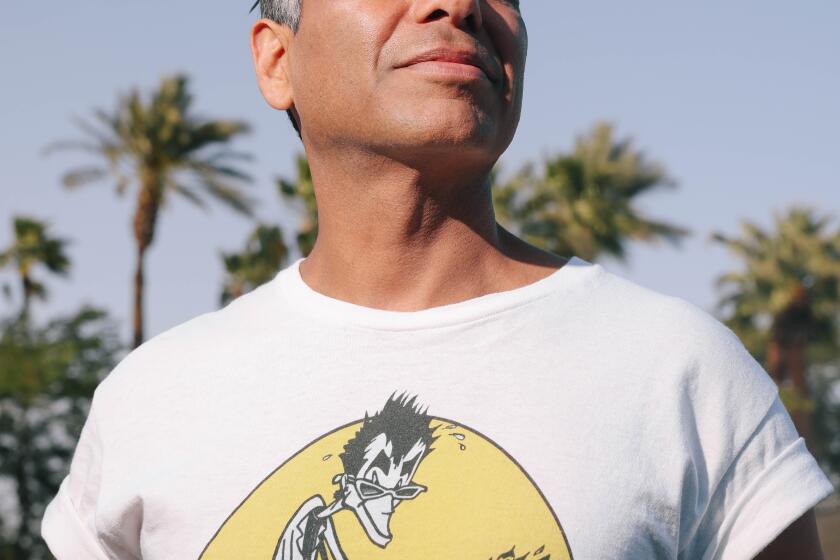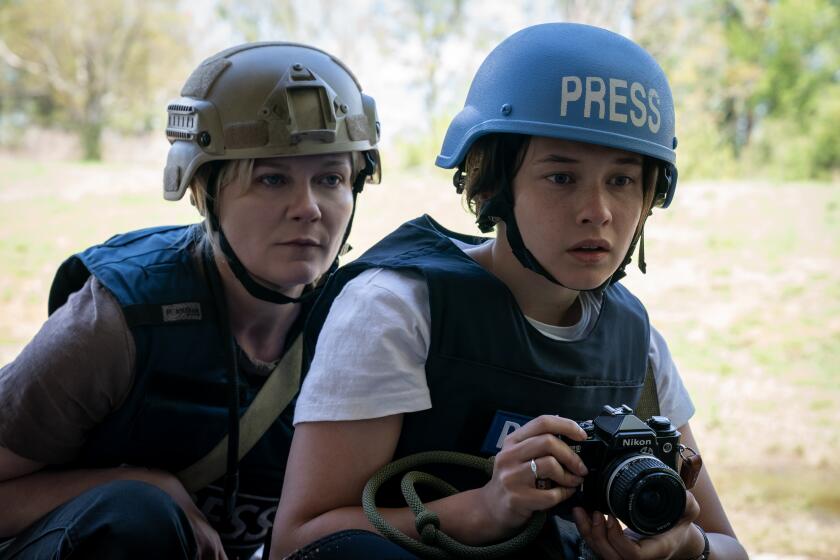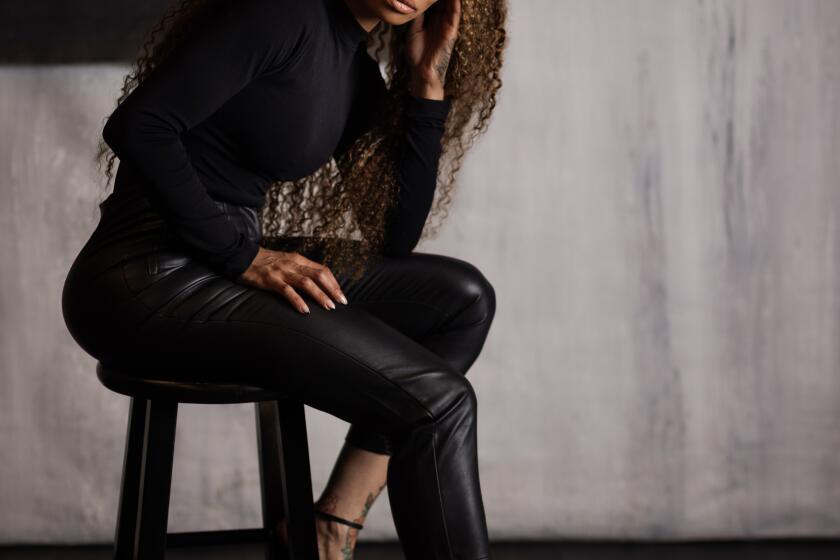Art world abuzz over leadership shake-ups at Christie’s, Sotheby’s
Multimillion-dollar bidding wars are suspenseful, sure, but the real drama at Christie’s and Sotheby’s lately has been behind the scenes: The top executive at each of the fierce rivals — the biggest auction houses in the world — is stepping down.
The separate announcements have sent the art world into a frenzy of speculation as to whether the resignations are related. Perhaps more important, experts say, the leadership shake-ups coincide with changes in the contemporary art auction world, where record sales do not necessarily translate into big profits, and where new markets — primarily China and the Web — are proving vital for growth.
The impending departure of William Ruprecht, chief executive of New York-based Sotheby’s, was widely expected after a costly proxy battle with Daniel Loeb, the auction house’s largest shareholder through his hedge fund Third Point. Loeb has publicly assailed Sotheby’s leadership.
The situation at London-based Christie’s, which is privately held, is less certain. Steven Murphy’s announcement that he was stepping down as chief executive by year’s end took many by surprise, largely because the company had been seen as dominating the contemporary art sector. His departure was announced Dec. 2, just 12 days after Ruprecht’s.
Ruprecht defended his record at Sotheby’s in a recent interview from New York. He also downplayed suggestions of acrimony between him and Loeb.
“I continue to win business with the company, and I’m working with the board on the transition,” Ruprecht said, adding he would continue to do so until his successor was found.
“I think it makes dramatic copy to characterize boardroom confrontations. The fact is, the board and I have had extremely civilized conversations. Dan has been respectful to me and only respectful. It has been an orderly and thoughtful process.”
Loeb, who sits on the boards of not only Sotheby’s but also the Museum of Contemporary Art in Los Angeles, declined to comment for this article. But he did write a scathing letter last year in which he said Ruprecht didn’t fully grasp the importance of contemporary and modern art to the company’s growth.
Rival Christie’s has been dominating that market, last month bringing in $852.9 million in a single auction — a record for a contemporary art sale, the company said. Last year, Christie’s scored a coup with the sale of a Francis Bacon triptych painting for $142.4 million, the largest sum ever realized for an individual work at auction.
Yet income statements from Christie’s French holding company, Arok International, showed that profits plummeted nearly 20% from 2012 to 2013. While revenue rose 13% to $1.14 billion, Christie’s profits fell to $122.7 million from $153.2 million.
This while the global art and antiques market continued to rebound from last decade’s recession — $65.9 billion in sales in 2013, up 8% from the previous year, according to a March report from the European Fine Art Foundation. It said the increase was driven by higher prices, not more sales.
One possible explanation for the auction houses’ financial pressures in what would seem like thriving times: Companies sometimes cut commissions to lure clients and offer guaranteed selling prices to sweeten the deal, putting pressure on profit margins, according to Michael Plummer, a principal and co-founder of Artvest Partners, a New York art investment firm, and co-director of the Spring Masters New York art fair.
“It’s my sense that Christie’s bottom line was not where it would normally be, given its revenue,” he said. “The high end of the business is marginal at best. More resources are going to securing those properties.”
Murphy, who joined Christie’s just four years ago after working in publishing, was unavailable for comment.
Sotheby’s may be at a competitive disadvantage given that publicly traded companies are compelled to operate with a greater level of transparency.
“In some respects, the art world is still operating on handshakes and backroom winks and nods,” said Tim Blum, co-owner of the Blum & Poe gallery in Culver City. “There’s still an unwritten code and way of working, and you can’t have that at a public company.”
Ruprecht, who has led Sotheby’s for close to 15 years, said that as a public company, you “create a playbook of facts that your competitor has access too.” But at the same time, “you also have access to capital markets.”
Shares of Sotheby’s jumped immediately after news of the pending departure of Ruprecht, who is entitled to a $4-million severance payment, according to a recent filing with the U.S. Securities and Exchange Commission. But for the year, the stock is off nearly 25%.
The contemporary art boom has made the industry more difficult than ever, said Philip Hoffman, chief executive of the Fine Art Fund Group, a London-based firm specializing in art investment.
“There’s a new breed of collector who is prepared to spend $50 million to $100 million on a work of art and who would never consider buying a Picasso or a Sargent,” he said.
This has caused shifts in corporate culture within the contemporary art departments of big auction houses, he said.
“It’s about winning the big brand sales that get the headlines and bring in clients and make it appear like they’re No. 1,” Hoffman said. “But the high end is high risk and maybe not much return.”
Both companies are in the early stages of developing the online market, but it still accounts for less than 1% of global art sales. Profit margins tend to be bigger online, but sales tend to be driven by items such as fine wine, jewelry and mid- and lower-range art. Sotheby’s partnered with eBay in what Ruprecht called a “fundamental strategic choice.” Tens of millions of people “have the potential to be transformative to consignors,” he said.
Both companies have established operations in mainland China and continue to do business in Hong Kong. Last month, Christie’s made headlines for the $45-million sale of a 15th-century work of Chinese art purchased by top collector Liu Yiqian, who has his own private museum, the Long Museum, in Shanghai. The sale was touted as a record for a Chinese work of art sold at an international auction.
Some in the art market have said the likely force behind Murphy’s resignation was Arok owner Francois Pinault, who bought the auction house in 1998. The billionaire has named Patricia Barbizet, a longtime executive in his corporate empire, as the new CEO of Christie’s. The company saw another departure last week with the exit of Doug Woodham, head of its Americas division.
At Sotheby’s, the search for a new chief executive is in its early phases, according to Domenico De Sole, lead independent director at the auction house.
Loeb declined to comment, but De Sole said Loeb, “like all our board members, cares passionately about the company and has been helpful on the board.”
He added: “We went through a proxy fight, but we are moving forward. That’s our responsibility.”
More to Read
The biggest entertainment stories
Get our big stories about Hollywood, film, television, music, arts, culture and more right in your inbox as soon as they publish.
You may occasionally receive promotional content from the Los Angeles Times.







